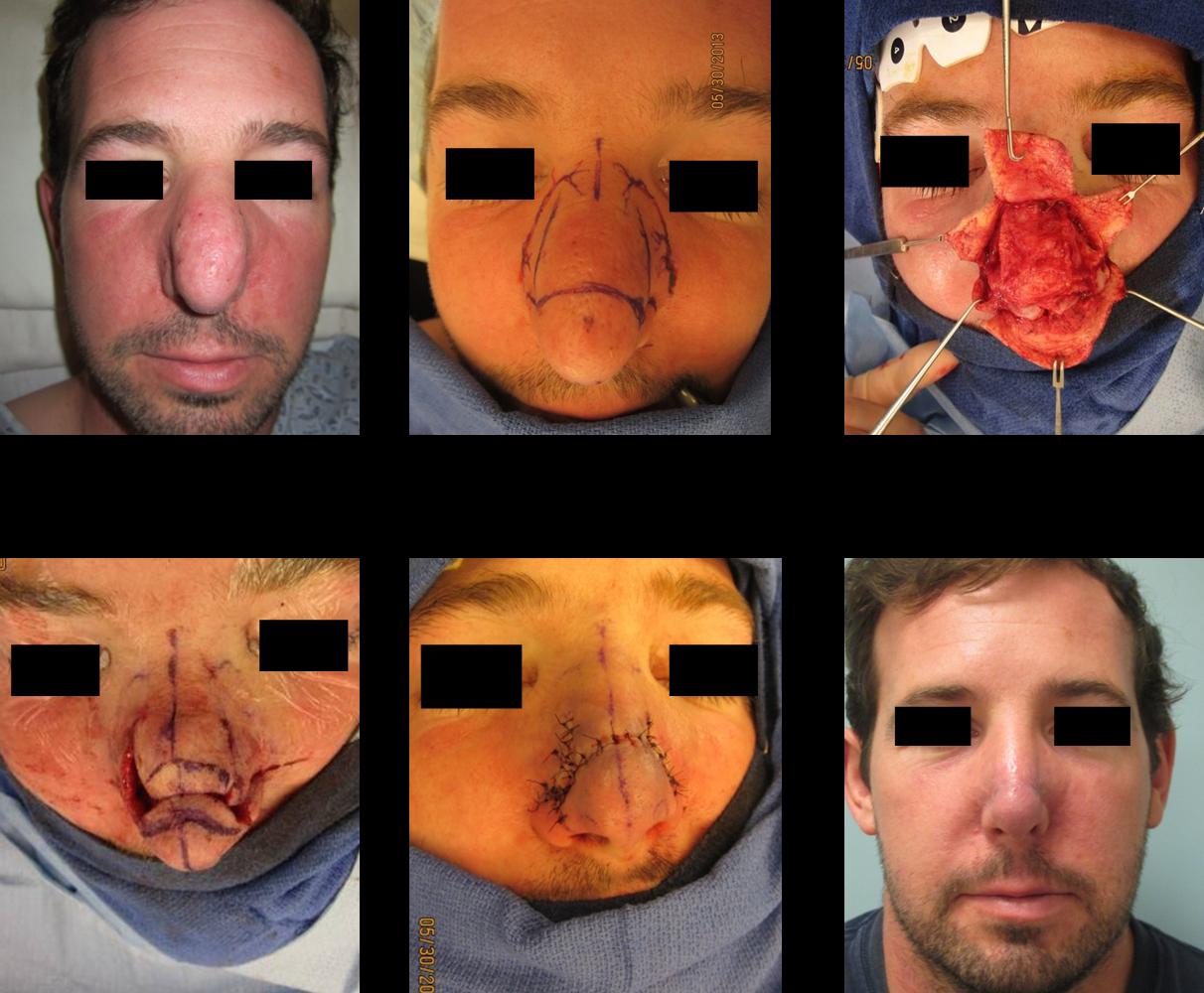Back to 2015 Annual Meeting
The Subunit Method: A Novel Excisional Approach for Rhinophyma
Aladdin H. Hassanein, MD, MMSc, Edward J. Caterson, MD, PhD, Jessica Erdmann-Sager, MD, Julian J. Pribaz, MD.
Harvard Medical School, Brigham and Women's Hospital, Boston, MA, USA.
BACKGROUND:
Rhinophyma causes a significant nasal deformity and can result in functional airway obstruction. Common excisional techniques include full thickness resection with skin grafting or tangential excision (using various modalities) and delayed secondary healing. The purpose of this study was to evaluate a novel approach for radical debulking of rhinophyma termed "the subunit method" which addresses 3 fundamental problems of the rhinophymatous nose: hypertrophic sebaceous tissues, excess skin (from the "tissue expander" effect), and destruction of support.
METHODS:
Medical records of consecutive patients with severe rhinophyma treated with the subunit method between 2013 and 2015 were reviewed. The technique comprises: (1) completely degloving the distal half of the nose by raising 6 axial flaps (2 alar, 2 sidewall, dorsum, and a soft triangle/columella/tip flap) with incisions placed at subunit borders; (2) radical debulking of rhinophymatous tissues en bloc to perichondrium; (3) enhancing nasal support with sutures/cartilage grafts as indicated; (4) redraping the nose with the 6 axial flaps; and (5) trimming excess skin at distal margins of these flaps during closure at the subunit junctions. Patient age, gender, need for cartilage grafts, revisions, and followup were recorded
RESULTS:
The study included 5 patients (all male). Mean age was 62 years (range 34-72). Three patients required alar batten grafts for support. Two patients underwent secondary revision. procedures. Mean followup was 12 months (range 1-22).
CONCLUSIONS:
The subunit method is an effective, novel excisional approach for rhinophyma facilitated by 6 axial flaps with incisions at aesthetic subunit borders (cosmetically advantageous). Benefits of the technique include restoring nasal contour (1) without necessitating delayed secondary healing; (2) providing maximal exposure for extensive excision of rhinophymatous tissues while maintaining native skin; (3) allowing for removal of excess "expanded" skin; and (4) the ability to debulk recurrent disease using the same scars. The subunit method has become our preferred excisional technique for severe rhinophyma.  
Back to 2015 Annual Meeting
|




